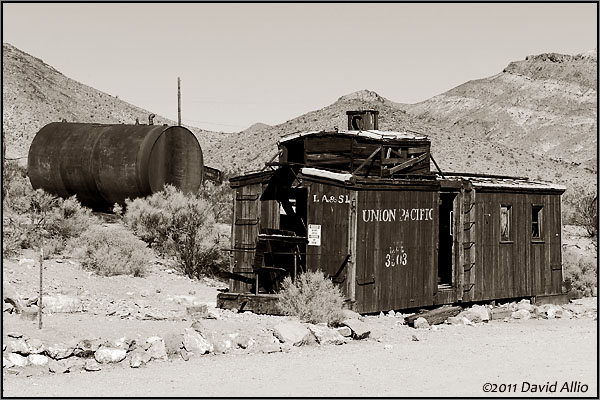Rhyolite, Nevada
There is a difference between a photojournalistic and an artistic interpretation of a scene. Basically, a photojournalist is bound to the accuracy of a scene as presented through the camera, lens, and exposure. After a photograph is created by the photojournalist, further interpretation is conducted by a photo editor, art director, or publisher.
By contrast, an art photographer is likely responsible for the creation of the original image as well as presentation of the finished image. Therefore, creative, artistic interpretation is virtually unlimited in post-production.

End of the Line | ©2011 David Allio
My response in this case is simple: My creative choice was the same as a painter. Just because the original was created as a photograph, complete with a normal spectrum of colors, does not mean that my artistic representation of the scene as an art print should be limited to a photojournalistic presentation of the scene. Confidentially, I selected a palette of rusted reds and browns because the vivid blue sky of the original color photo just did not represent the decomposition and decay of the scene.
The original color digital version of this photograph was created using Nikon D3 camera equipped with an AF-S Nikkor 24-70mm 1:2.8G ED lens. With the focal length set at 70mm and exposure mode of Manual, the exposure settings were an aperture of f/13, shutter speed of 1/800th second, and film speed 400 ISO. Lighting was bright early afternoon sunlight. Colorization was achieved in post production.
You must be logged in to post a comment.